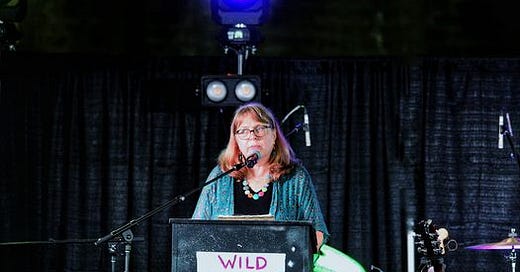
Discover more from The Cottage
Luke 24:1-12; 36-42
On the first day of the week, at early dawn, the women who had come with Jesus from Galilee came to the tomb, taking the spices that they had prepared. They found the stone rolled away from the tomb, but when they went in, they did not find the body. While they were perplexed about this, suddenly two men in dazzling clothes stood beside them. The women were terrified and bowed their faces to the ground, but the men said to them, "Why do you look for the living among the dead? He is not here, but has risen. Remember how he told you, while he was still in Galilee, that the Son of Man must be handed over to sinners, and be crucified, and on the third day rise again." Then they remembered his words, and returning from the tomb, they told all this to the eleven and to all the rest. Now it was Mary Magdalene, Joanna, Mary the mother of James, and the other women with them who told this to the apostles. But these words seemed to them an idle tale, and they did not believe them. But Peter got up and ran to the tomb; stooping and looking in, he saw the linen cloths by themselves; then he went home, amazed at what had happened.
[Later that day] while the disciples were talking about this, Jesus himself stood among them and said to them, "Peace be with you." They were startled and terrified, and thought that they were seeing a ghost. He said to them, "Why are you frightened, and why do doubts arise in your hearts? Look at my hands and my feet; see that it is I myself. Touch me and see; for a ghost does not have flesh and bones as you see that I have." And when he had said this, he showed them his hands and his feet. While in their joy they were disbelieving and still wondering, he said to them, "Have you anything here to eat?" They gave him a piece of broiled fish, and he took it and ate in their presence.
Happy Easter! Alleluia! Resurrection Day! Christ is Risen!
To which I add a friendly warning label: Don’t go on social media today and mention the Resurrection.
There’s a now-predictable online liturgy every Easter Sunday — Christians arguing over the resurrection. Was it actually an historical, physical, and scientific event? Or was it more of a spiritual event? Was the resurrection “real” or a metaphor for new life? On Twitter, it ends up with lots of name-calling, subtweeting, hurt feelings, muting, and blocking.
I’m calling a truce in the resurrection wars. Not because I’ve come up with some brilliant theory to overcome the divide. Instead, I’d like to point out one simple thing about the resurrection: Christians have (mostly) agreed that something happened long ago but we’ve seldom agreed as to what it was or what it should mean.
The thin thread of agreement isn’t found in the gospels. Rather, it is recorded by Paul in 1 Corinthians. The letter was written about twenty years after Jesus’ death, making it the third oldest book in the New Testament (only 1 Thessalonians and Galatians are older). In chapter 15, Paul writes:
Christ died for our sins in accordance with the scriptures, and that he was buried, and that he was raised on the third day in accordance with the scriptures, and that he appeared to Cephas, then to the twelve. (1 Corinthians 15:3-5)
Paul claimed that he’d “received” these words. That means, of course, that these ideas weren’t original with him. Instead, they were known in early communities within living memory of Jesus’ life and death. Some scholars think these three verses represent an ancient creed, perhaps one of the earliest of such Christian faith statements.
And that’s pretty much the extent of agreement: died, buried, raised on the third day, appeared.
After reciting this proto-creed, Paul launched into a complex discussion to remind the Corinthians of the centrality of the resurrection, with this as his main point:
So it is with the resurrection of the dead. What is sown is perishable, what is raised is imperishable. It is sown in dishonour, it is raised in glory. It is sown in weakness, it is raised in power. It is sown a physical body, it is raised a spiritual body. If there is a physical body, there is also a spiritual body. (1 Corinthians 15:42-44).
The resurrection was important, but it wasn’t quite what the Corinthians envisioned. According to Paul, it involved something he called a “spiritual body” (for more on this, see my longer post HERE), a term he invented. “Spiritual body” is akin to saying that a resurrected body is a “God-stuff body.” Not a body made up of blood, sinews, and flesh like our bodies. Resurrection, even a bodily one, yes. But a very different kind of body.
About twenty-five years later, the writer of Luke’s gospel, a person Paul may have actually known, took exception to Paul’s idea of a “spiritual” body and inserted these words in his Easter account: “Touch me and see; for a ghost does not have flesh and bones as you see that I have." Luke’s resurrected Jesus appears in a regular physical body (even if not initially recognized) and likes to eat. Luke is very insistent on the kind of resurrection — and seems to specifically disagree with Paul’s earlier idea.
That’s right. Paul and Luke may agree that something happened three days after Jesus died — a something called resurrection — but they don’t agree on what it was. Paul’s “spiritual body” and Luke’s “touch me and see” aren’t the same.
Paul and Luke may be the resurrection extremes, but other New Testament writers present conflicting views of these events as well. Mark’s Easter ends with terrified disciples who have no idea what to think or do; Matthew’s story has the disciples fall at Jesus’ feet, and while holding those feet, they worship him; John tells how Jesus resisted Mary Magdalene’s impulse to touch him. Indeed, Jesus later appears to early followers in mystical visions and dreams as a distinctly non-physical manifestation of his presence. Individual believers embody Jesus, and the church is called the Body of Christ. Exactly what a body is in the New Testament is confusing at best. All of this reveals a startling diversity of opinion regarding the resurrection.
For far too long, Christians have thought of the resurrection as a problem to be solved. Theologians and church authorities have sought to harmonize the accounts into a single narrative, privileged one narrative above the others, and attempted to create creedal and intellectual conformity. Apologists tried to prove the resurrection scientifically and through historical evidence. Many went searching for the true account of Easter.
But what if the quest for uniformity was a mistake? What if the diversity of these accounts is actually a gift?
I’m now into my seventh decade of Easter Sundays. And the truth of the matter is that I’ve found myself in every one of these accounts. My experience of the resurrection has changed through the years. I’ve wept over the miracle of the empty tomb, doubted that Jesus was raised, felt the presence of Christ around a table, touched someone’s wounds and there found Jesus. I’ve been terrified by the stone rolled away; I’ve reached toward Jesus with enthusiastic embrace. I’ve felt desolate and deserted by a dead Christ and I’ve heard Jesus speak as clearly as I hear my own voice. I’ve proclaimed the resurrection; I’ve held back. I’m so grateful for all the stories, the conflicts, and the diversity at the heart of the Easter encounter — for it is only such diversity that can hold a lifetime of faith and doubt, hope and fear, logic and mysticism, awe and skepticism, spirit and body. All of it and more.
The resurrection is not one thing. It is a prismatic mystery. It is an unwordable story of God and Jesus and us: an experience of the beyond breaking in, the reality of love and life and justice and joy no matter the power of death. One account, a single angle of vision, can’t begin to explain or communicate it.
Whatever happened on that morning a long time ago, it keeps happening — to me and to millions of others in thousands of ways in a multitude of times and places. I’m less worried about what happened then than how we experience and practice it now.
I once quizzed an old-fashioned liberal bishop about whether or not he believed in the resurrection. “Do I believe in the resurrection? Of course I believe in the resurrection,” he replied, “I’ve seen it too many times not to.” And I bet no two of those times were exactly the same.
Alleluia!
INSPIRATION
Shortly before he died, Alan E. Lewis, theologian and seminary professor, referred to this as the most perfect of all Easter hymns:
Now the green blade riseth, from the buried grain,
Wheat that in dark earth many days has lain;
Love lives again, that with the dead has been:
Love is come again like wheat that springeth green.
In the grave they laid Him, Love who had been slain,
Thinking that He never would awake again,
Laid in the earth like grain that sleeps unseen:
Love is come again like wheat that springeth green.
Forth He came at Easter, like the risen grain,
Jesus who for three days in the grave had lain;
Quick from the dead the risen One is seen:
Love is come again like wheat that springeth green.
When our hearts are wintry, grieving, or in pain,
Jesus' touch can call us back to life again,
Fields of our hearts that dead and bare have been:
Love is come again like wheat that springeth green.















I loved how you began with the "wars" around the bodily resurrection---yes or no--and led us beyond the false binary to the multiple experiences, the prismatic mystery
I very much appreciate your term “prismatic mystery” because if we have a living vital sincere true ongoing relationship with the pure light of love from Source, then what happened historically is an illustration of what is possible to occur in human form all the time everywhere. When the mystical becomes commonplace all arguments cease.